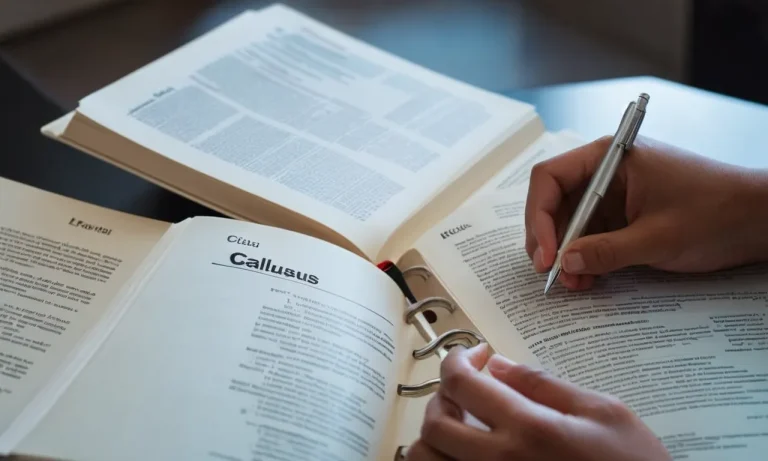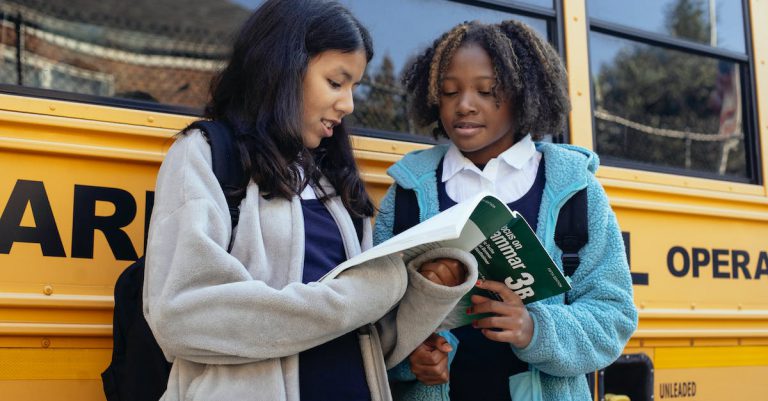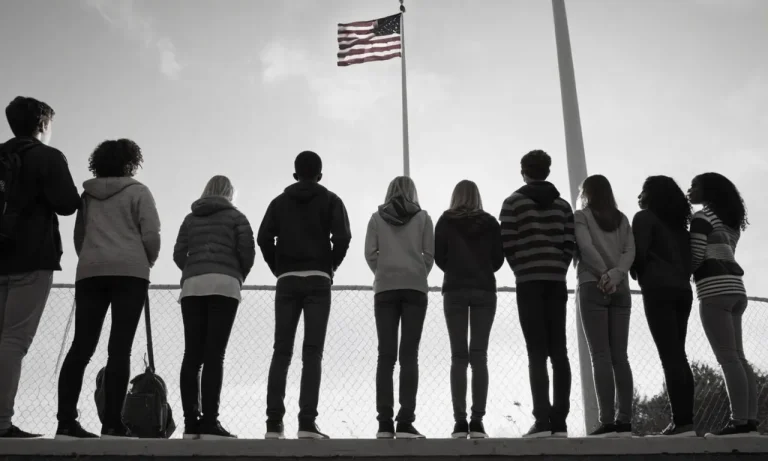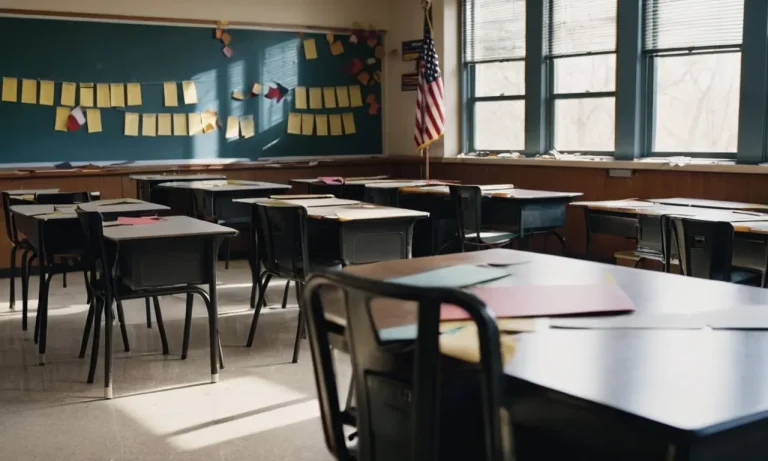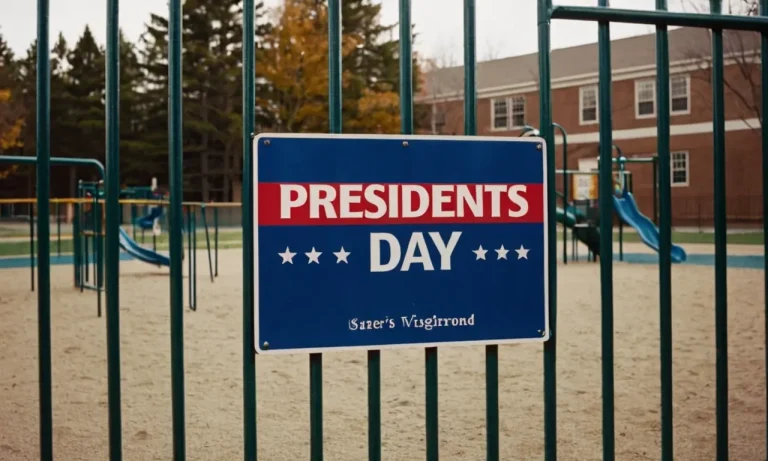In today’s world, security cameras have become an integral part of our lives, especially in educational institutions where the safety of students and staff is of utmost importance. As a parent, student, or concerned citizen, you may have wondered, ‘How long do school cameras keep footage?’
This question is not only relevant for security purposes but also for addressing potential incidents or concerns.
If you’re short on time, here’s a quick answer to your question: The duration for which school cameras keep footage can vary depending on several factors, such as the school’s policies, storage capacity, and legal requirements.
Generally, most schools retain footage for a period ranging from 30 days to several months, but this can differ based on specific circumstances.
In this comprehensive article, we will delve into the intricacies of school camera footage retention, exploring the factors that influence the duration, legal considerations, best practices, and the importance of having a well-defined policy in place.
Whether you’re a parent, educator, or simply curious about this topic, this guide will provide you with valuable insights and a deeper understanding of the subject matter.
Factors Influencing School Camera Footage Retention
School Policies and Procedures
The length of time that school cameras keep footage is primarily determined by the policies and procedures set forth by the educational institution itself. Each school district or individual school may have its own guidelines and protocols in place regarding video surveillance retention periods.
These policies often take into account factors such as the purpose of the cameras (e.g., safety, security, or monitoring), the sensitivity of the recorded areas, and the available storage capacity. Some schools may choose to keep footage for a relatively short period, such as a few weeks or a month, while others may retain it for an entire academic year or longer.
It’s essential for schools to clearly communicate their retention policies to staff, students, and parents to ensure transparency and compliance with applicable laws and regulations.
Storage Capacity and Technology
The storage capacity and technological capabilities of the school’s video surveillance system play a significant role in determining how long footage can be retained. With advancements in digital storage solutions, schools now have access to larger and more cost-effective storage options, allowing for longer retention periods.
However, it’s important to strike a balance between storage capacity and the quality of the footage being captured. Higher-resolution cameras and longer retention periods can quickly consume storage space, necessitating periodic upgrades or deletions of older footage.
According to a survey by Campus Safety Magazine, 46% of schools reported using cloud-based storage for their security camera footage, which can offer scalable and potentially unlimited storage capacity.
Legal Requirements and Regulations
Schools must comply with various legal requirements and regulations when it comes to retaining video surveillance footage. These regulations may vary depending on the state or jurisdiction in which the school is located.
Some states have specific laws governing the use of security cameras in educational settings, including guidelines for retention periods. Additionally, federal laws such as the Family Educational Rights and Privacy Act (FERPA) may come into play if the footage captures identifiable student information.
FERPA guidelines recommend that schools establish and follow reasonable retention policies for education records, including video footage. Failure to comply with these regulations can result in legal consequences and potential fines.
Incident-Based Retention
In many cases, schools may choose to retain video footage for extended periods if it is related to a specific incident or investigation. For example, if a security breach, criminal activity, or disciplinary issue occurs on school premises, the relevant footage may be preserved as evidence or for further review.
This incident-based retention can override the school’s standard retention policies and can last until the matter is resolved or as required by law enforcement or legal proceedings. 😊 Schools often have procedures in place for identifying, isolating, and securely storing footage related to such incidents, ensuring its integrity and availability for authorized personnel.
Ultimately, the retention period for school camera footage is influenced by a multitude of factors, including school policies, technological capabilities, legal obligations, and incident-specific considerations.
By carefully balancing these factors and implementing robust retention policies, schools can ensure the effective use of video surveillance while maintaining compliance and safeguarding the privacy and security of their students and staff.
Legal Considerations for School Camera Footage
Privacy Laws and Regulations
Maintaining student privacy is a top priority for schools when it comes to surveillance footage. The Family Educational Rights and Privacy Act (FERPA) https://www2.ed.gov/policy/gen/guid/fpco/ferpa/index.html is a federal law that protects the privacy of student education records, including video recordings.
Schools must ensure that camera footage is handled in compliance with FERPA regulations to safeguard students’ personal information. Additionally, state and local privacy laws may impose additional requirements on how schools handle and retain surveillance data.
Failure to adhere to these regulations can result in hefty fines and legal consequences.
Evidence Preservation for Investigations
School camera footage can serve as crucial evidence in investigations involving incidents such as bullying, fights, or other misconduct. Schools are often required to retain footage for a specific period to support potential investigations or legal proceedings.
According to a survey by the National Association of State Boards of Education, over 70% of schools keep surveillance footage for at least 30 days, and some retain it for up to a year or more. However, the exact retention period may vary based on state laws, district policies, and the nature of the incident under investigation.
😮 It’s essential for schools to have clear procedures for preserving and accessing relevant footage when needed.
Data Protection and Cybersecurity
With the increasing reliance on digital surveillance systems, schools must prioritize data protection and cybersecurity measures to safeguard camera footage from unauthorized access or breaches. This includes implementing robust encryption protocols, access controls, and secure storage solutions.
The U.S. Department of Education’s Privacy Technical Assistance Center provides guidance on best practices for protecting student data, including video recordings. According to a report by the K-12 Cybersecurity Resource Center, over 60% of reported cybersecurity incidents in schools involved data breaches or unauthorized disclosures. 🚨 Schools must stay vigilant and proactive in securing their surveillance systems to prevent potential data leaks or misuse.
- Ensure compliance with privacy laws like FERPA to protect student privacy.
- Retain footage for a sufficient period to support investigations and legal proceedings.
- Implement robust data protection and cybersecurity measures to safeguard camera footage.
Best Practices for School Camera Footage Management
Developing a Comprehensive Policy
Establishing a robust and comprehensive policy for managing school camera footage is crucial for maintaining privacy, security, and legal compliance. This policy should clearly outline the purpose of the surveillance system, the types of footage captured, the retention period, and the procedures for accessing and sharing the footage.
According to a study by the National Center for Education Statistics, over 80% of public schools in the United States have implemented video surveillance systems, highlighting the importance of proper footage management.
Proper Storage and Backup Solutions
Ensuring the proper storage and backup of school camera footage is essential to prevent data loss and enable efficient retrieval when needed. Schools should invest in secure, reliable, and scalable storage solutions, such as cloud-based or on-premises servers, with adequate capacity to accommodate the volume of footage generated.
Regular backups should be performed to safeguard against data corruption or system failures. According to a survey by Campus Safety Magazine, 65% of schools reported using cloud-based storage solutions for their surveillance footage.
Access Control and Monitoring
Implementing strict access control measures is vital to protect the privacy and confidentiality of school camera footage. Access should be granted only to authorized personnel on a need-to-know basis, with robust authentication and logging mechanisms in place.
Regular monitoring of access logs can help detect and prevent unauthorized access attempts. Additionally, schools should consider implementing data encryption and secure transmission protocols to further enhance the security of the footage.
Regular Policy Review and Updates
As technology and regulations evolve, it is essential for schools to regularly review and update their camera footage management policies. This ensures compliance with the latest laws and industry best practices.
Engaging stakeholders, such as parents, teachers, and law enforcement agencies, in the policy review process can provide valuable insights and foster transparency. According to a study by the American Civil Liberties Union, only 38% of schools reviewed their surveillance policies annually, highlighting the need for more frequent reviews.
By implementing these best practices, schools can effectively manage their camera footage, strike a balance between safety and privacy concerns, and foster a secure and trusted environment for students, staff, and the broader community.
Remember, effective footage management is an ongoing process that requires diligence, collaboration, and continuous improvement.
The Importance of School Camera Footage Retention
Student and Staff Safety
Ensuring the safety and well-being of students and staff is of paramount importance in any educational institution. School camera footage plays a crucial role in this regard by providing a visual record of events that can help identify potential threats, deter inappropriate behavior, and aid in investigating incidents.
According to a study by the National Center for Education Statistics https://nces.ed.gov/fastfacts/display.asp?id=334, schools with security cameras reported a 28% decrease in violent incidents compared to those without cameras.
By retaining footage for an appropriate duration, schools can review and analyze recorded events, enabling them to take proactive measures to enhance campus security and foster a safe learning environment for all.🔒
Incident Investigation and Resolution
Incidents, whether they involve bullying, fights, theft, or other misconduct, can have a profound impact on the school community. Retaining camera footage for an adequate period is essential for conducting thorough investigations and resolving disputes. With access to video evidence, schools can objectively review events, identify involved parties, and determine appropriate disciplinary actions or legal measures if necessary.
This transparency and accountability can help build trust and confidence among students, parents, and staff, promoting a fair and just environment. According to a survey by the National Association of School Resource Officers https://nasro.org/survey-results/, over 80% of respondents found camera footage invaluable in resolving conflicts and addressing disciplinary issues effectively.🕵️♂️
Liability Protection and Risk Mitigation
In today’s litigious society, schools face various legal risks and potential liabilities. Retaining camera footage can serve as a valuable tool for mitigating these risks by providing evidence in case of lawsuits or claims.
For instance, if a student or staff member is injured on school premises, footage can help determine the circumstances surrounding the incident and establish liability, if any. Similarly, in cases of alleged misconduct or discrimination, video evidence can help protect the school’s interests and support their defense.
According to a report by the National School Boards Association https://www.nsba.org/-/media/NSBA/ASBJ/2020/ASBJ_May2020_SchoolSafety.pdf, over 60% of school districts cited liability protection as a primary reason for implementing security cameras.👮♀️
Fostering a Secure Learning Environment
A secure and positive learning environment is essential for students to thrive academically and personally. By retaining camera footage, schools can proactively identify potential security vulnerabilities, monitor high-risk areas, and implement measures to address any concerns.
Additionally, the presence of cameras can serve as a deterrent against undesirable behavior, promoting a sense of accountability and encouraging a culture of respect and responsibility among students.
According to a study by the U.S. Department of Education https://www2.ed.gov/admins/lead/safety/cctv.html, schools with comprehensive security measures, including video surveillance, reported a 20% reduction in disciplinary incidents compared to those without such measures.
By fostering a secure learning environment, students can focus on their studies and personal growth without the distraction or fear of potential threats.🏫
Conclusion
The duration for which school cameras keep footage is a critical aspect of ensuring the safety and security of students, staff, and the entire educational community. While the retention period may vary based on various factors, it is essential for schools to have a well-defined and comprehensive policy in place that aligns with legal requirements, technological capabilities, and best practices.
By understanding the factors influencing footage retention, legal considerations, and best practices, schools can effectively manage their camera systems and strike a balance between privacy concerns and the need for security and accountability.
Ultimately, the appropriate retention of school camera footage plays a vital role in fostering a secure learning environment, enabling incident investigations, mitigating risks, and protecting the well-being of all stakeholders involved.

